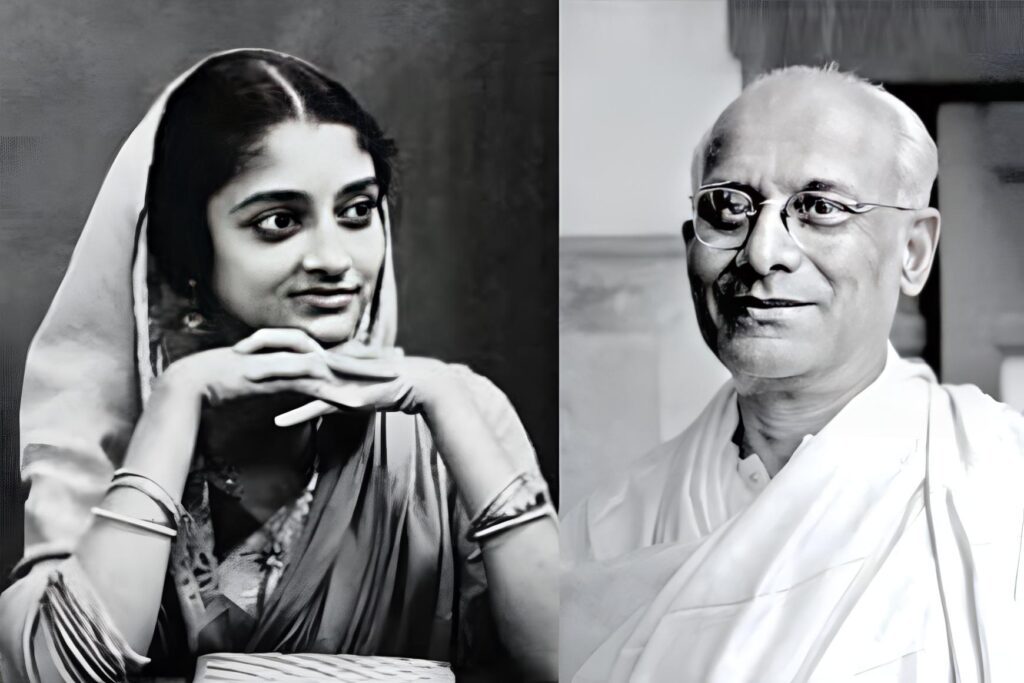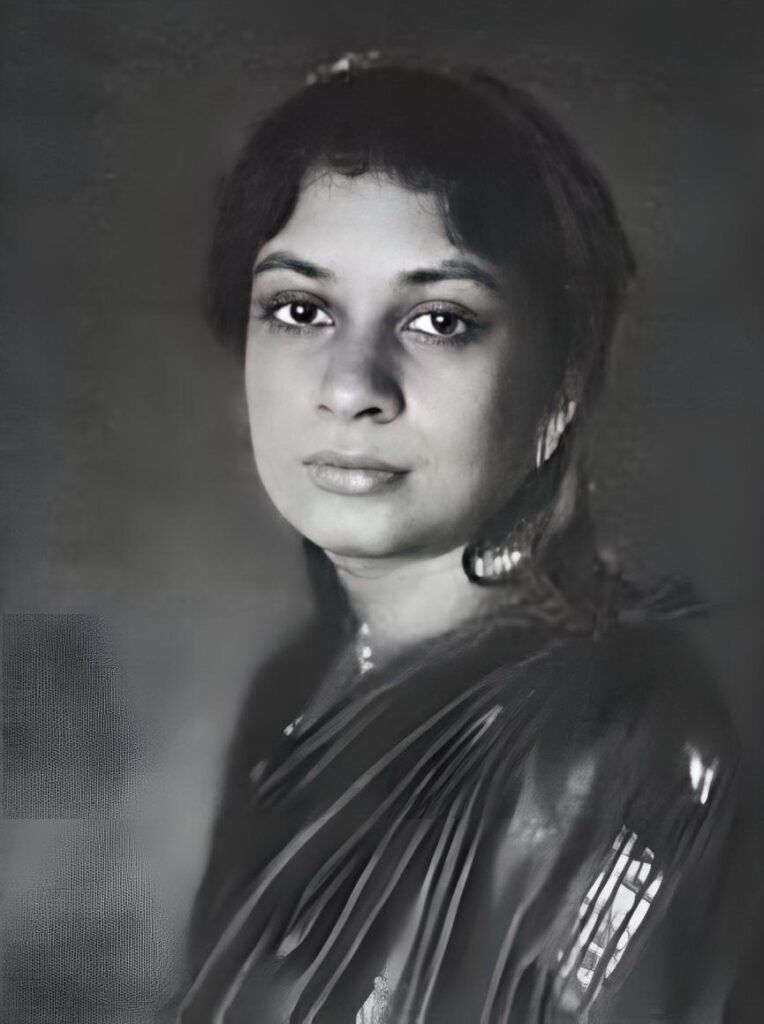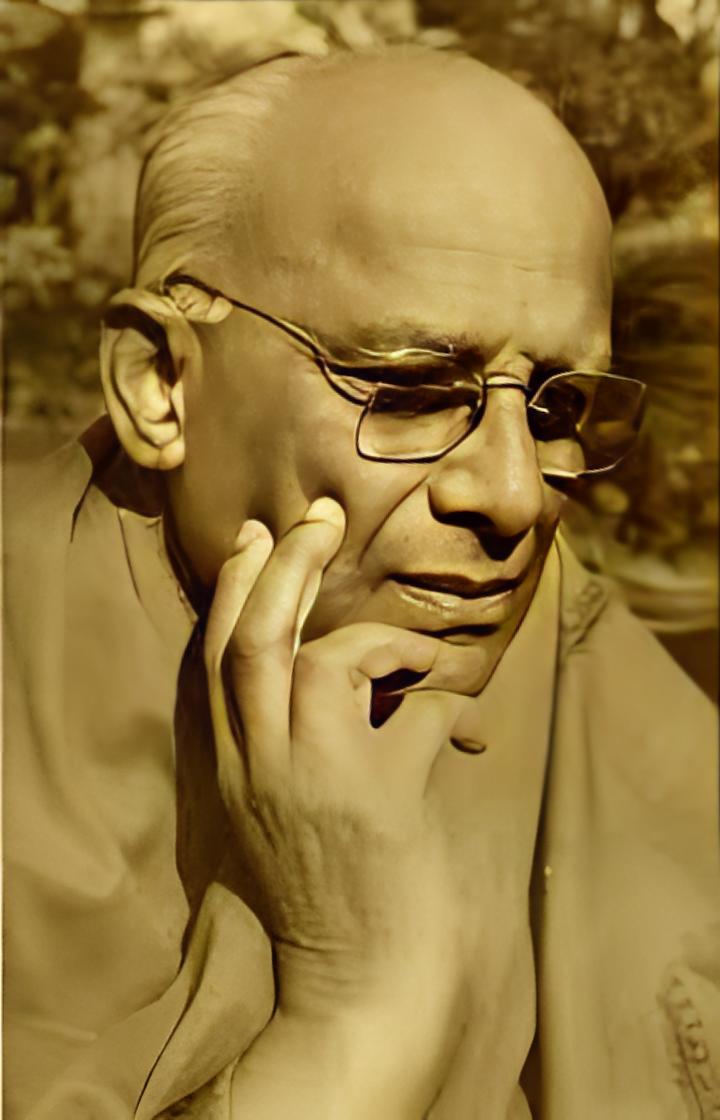Chapter 1. Introduction
Rathindranath Tagore: A Polymath’s Journey
Rathindranath Tagore, a name that resonates with multifaceted brilliance, embarked on a journey that traversed the realms of education, agriculture, and artistry. In this chapter, we will delve into the life of this remarkable polymath, exploring the early years that shaped his destiny and the diverse fields where he left an indelible mark.
Early Years and Family Background
Rathindranath Tagore, born on November 27, 1888, emerged as the eldest son of the illustrious Rabindranath Tagore. His birthplace, the historic Jorasanko Thakur Bari in Calcutta, Bengal Presidency, bore witness to his arrival during the era of British colonial rule. The Tagore family, known for its contributions to literature and culture, provided a rich backdrop for Rathindranath’s upbringing.
As a young child, Rathindranath received his education under the personal tutelage of his father, Rabindranath Tagore, a Nobel laureate in literature. This intimate form of education laid the foundation for his intellectual development and instilled in him a profound love for learning.
Scholarly Pursuits Abroad
Rathindranath’s thirst for knowledge led him on a transformative journey. In the early 1900s, he joined the Brahmacharya asrama in Shantiniketan, where he was among the first five scholars to immerse themselves in Rabindranath’s pedagogical vision. This marked the beginning of Rathindranath’s scholarly pursuits.
However, his quest for education extended far beyond Indian shores. In 1906, Rathindranath, along with his companion Santosh Chandra Majumdar, embarked on a voyage to Japan. Their educational odyssey eventually led them to the United States, where they pursued degrees in agricultural science at the University of Illinois in 1909.
Rathindranath’s time in the United States was instrumental in shaping his understanding of agriculture and scientific methodologies, which he would later apply in innovative ways in India.
A Glimpse into the Polymath’s Life
This chapter has provided a glimpse into the early years and academic pursuits of Rathindranath Tagore. As we journey through the following chapters, we will uncover the various facets of his life, from his contributions to agriculture in Shilaidaha to his roles at Santiniketan and the challenges he faced as the Vice-Chancellor of Visva-Bharati. Rathindranath’s journey is a testament to his unwavering dedication and pioneering spirit, leaving an enduring impact on Indian society and culture.
Chapter 2. The Return to India
Rathindranath Tagore, having completed his academic pursuits abroad, returned to India with a wealth of knowledge and a renewed sense of purpose. This chapter explores his journey back to his homeland, the compelling factors that drew him to Shilaidaha, and the dynamics of his relationship with his father, Rabindranath Tagore.
2.1. The Call of Shilaidaha
Upon his return to India around 1910, Rathindranath found himself at a significant crossroads in his life. His father, Rabindranath Tagore, earnestly implored him to shoulder the responsibilities of the family’s zamindari at Shilaidaha. This picturesque region, situated on the banks of the Padma River, held great significance for the Tagore family.
Shilaidaha: A Place of Legacy
Shilaidaha had been a place of creative refuge for Rabindranath Tagore, where he penned many of his literary works. The idyllic surroundings and serene ambiance had left an indelible mark on the Tagore family, making it a place of deep sentimental value.
The Passing of Wisdom
In the months that followed Rathindranath’s return to India, he embarked on the task of acquainting his father with the knowledge he had acquired during his university years. This period marked a unique closeness between father and son as they shared insights and ideas, bridging the generational gap that had separated them during Rathindranath’s absence.
2.2. Father and Son: Bridging the Generational Gap
The year 1910 was a pivotal juncture in Rathindranath’s life as he embraced his role in Shilaidaha. While Rathindranath nurtured the family’s zamindari, his father Rabindranath Tagore continued to be a guiding influence in his life.
Mutual Learning and Growth
Rathindranath’s return to India brought with it a reciprocal exchange of wisdom. While Rathindranath shared his newfound knowledge in agriculture and science, Rabindranath’s profound literary and artistic insights continued to shape Rathindranath’s intellectual journey.
The Legacy Continues
Under the tutelage of his father, Rathindranath Tagore embarked on a mission to infuse the principles of self-governance and modern farming techniques into the local community of Shilaidaha. This marked the beginning of Rathindranath’s transformative endeavors in the realm of agriculture.
As we delve deeper into Rathindranath Tagore’s life, subsequent chapters will shed light on his pioneering contributions in Shilaidaha and the unique dynamics of his family life, offering a comprehensive portrait of this polymath’s multifaceted journey.
Chapter 3. Agricultural Innovations in Shilaidaha
Rathindranath Tagore’s return to India marked not only a significant personal journey but also the beginning of pioneering agricultural innovations in the region of Shilaidaha. In this chapter, we delve into the transformative contributions he made to agriculture, which left an enduring impact on the local community and beyond.
3.1. Establishing a Soil Testing Laboratory
Modernizing Farming Practices
Upon assuming his role in Shilaidaha, Rathindranath recognized the need to modernize traditional farming practices. He spearheaded the establishment of a cutting-edge soil testing laboratory, a first of its kind in the region. This laboratory played a pivotal role in assessing soil health, nutrient levels, and other critical factors that determined crop yields.
Precision Farming
The soil testing laboratory enabled farmers to make informed decisions about the choice of crops and the application of fertilizers. Rathindranath’s emphasis on precision farming resulted in increased agricultural productivity and the sustainable use of resources. This innovative approach significantly improved the socio-economic conditions of the local farming community.
3.2. Experimenting with New Crops and Farming Machinery
Diverse Crop Cultivation
Rathindranath Tagore’s agricultural endeavors extended beyond soil testing. He imported a diverse array of plant seeds from different regions and introduced them to Shilaidaha. These new crops not only diversified the local agricultural landscape but also contributed to food security and economic growth.
Ingenious Adaptation
In addition to introducing new crops, Rathindranath displayed his ingenuity by adapting farming machinery to suit the specific requirements of the region. This included modifying equipment to handle local conditions and crops effectively. His ability to merge modern techniques with traditional wisdom made him a pioneer in sustainable agriculture.
Rathindranath’s contributions to agriculture in Shilaidaha not only transformed the local farming community but also set a precedent for modern and sustainable agricultural practices in India. His legacy in this field endures, reminding us of the significant impact one person can have on the lives of many through dedication and innovation.
Chapter 4. Marriage and Family Life
Rathindranath Tagore’s personal life was as unconventional as it was intriguing. In this chapter, we dive into his marriage and family life, shedding light on the complexities and dynamics that shaped his relationships.

4.1. The Unconventional Union
A Marriage of Minds
Rathindranath’s marriage to Pratima was no ordinary union. It was a meeting of two brilliant minds, both fiercely independent and deeply committed to their respective pursuits. Their partnership was founded on intellectual compatibility and mutual respect, rather than traditional roles.
A Modern Marriage
In an era where societal norms dictated strict gender roles, Rathindranath and Pratima defied convention. They supported each other’s ambitions, with Pratima pursuing her artistic endeavors and Rathindranath his multifaceted career. Their unconventional approach to marriage was a testament to their progressive outlook.

4.2. Correspondence and the Growing Distance
The Power of Letters
Rathindranath and Pratima maintained a significant part of their relationship through correspondence. Their letters, filled with profound insights and affection, reflect the depth of their bond. These letters provide a unique window into their minds and hearts.
The Challenges of Distance
As Rathindranath’s career took him to different parts of India and beyond, physical distance began to take its toll. The demands of their respective work and the geographical separation created strains in their relationship. Despite the challenges, their connection remained resilient.
Rathindranath Tagore’s marriage to Pratima was far from conventional, marked by intellectual synergy and a commitment to breaking societal norms. The complexities of their relationship, their unconventional approach to marriage, and their enduring connection through letters make for a fascinating exploration of his personal life.
Chapter 5. Contributions to Santiniketan
Rathindranath Tagore’s commitment to education and his role in transforming Santiniketan into a hub of learning and creativity are the focus of this chapter. Explore how he shaped the educational landscape.
5.1. Transforming Brahmacharya Ashram
The Vision of an Educational Utopia
Rathindranath Tagore envisioned Santiniketan as an educational utopia where the traditional boundaries of classroom learning would dissolve. At the heart of this transformation was the Brahmacharya Ashram, a center of learning that embodied his progressive ideas.
A Blend of Tradition and Innovation
In this chapter, we uncover the innovative teaching methods and the unique curriculum that Rathindranath introduced at the Brahmacharya Ashram. From arts and crafts to nature-based education, he believed in nurturing a holistic, well-rounded education.
5.2. Roles and Responsibilities at Santiniketan
The Pedagogical Pioneer
Rathindranath Tagore played a multifaceted role at Santiniketan. As the pedagogical pioneer, he wore many hats, including that of a mentor, educator, and institution-builder. His impact on the educational ethos of Santiniketan was profound.
Fostering Creative Minds
Under Rathindranath’s guidance, Santiniketan became a hub for artists, writers, and thinkers. The atmosphere of creative freedom and exploration he fostered attracted luminaries from various fields, contributing to the institution’s unique charm.
In this chapter, we explore Rathindranath Tagore’s transformative contributions to Santiniketan, where he redefined education and created an environment that nurtured creativity and innovation. His vision and leadership at the Brahmacharya Ashram continue to influence modern educational philosophies.
Chapter 6. Challenges and Resignation
This chapter delves into the pivotal period of Rathindranath Tagore’s life when he faced significant challenges and ultimately made the difficult decision to resign from a prominent position.
6.1. The Role of Vice-Chancellor
Rathindranath’s appointment as the Vice-Chancellor of Visva-Bharati was a momentous event in his career. It marked a new chapter where he was entrusted with shaping the future of this esteemed institution.
Vision vs. Realities
In this section, we explore Rathindranath’s ambitious vision for Visva-Bharati and the practical challenges he encountered while trying to implement it. His desire to blend Indian and Western education systems often faced resistance and skepticism.
6.2. Allegations and Legal Proceedings
Unforeseen Controversies
As Vice-Chancellor, Rathindranath found himself embroiled in controversies and legal disputes. This section uncovers the allegations and criticisms he faced during his tenure and how these controversies affected him personally and professionally.
The Resignation
Ultimately, Rathindranath’s journey as Vice-Chancellor came to an unexpected and controversial end. We delve into the circumstances leading to his resignation and the impact it had on Visva-Bharati and his legacy.
In this chapter, we unravel the challenges Rathindranath Tagore faced during his tenure as Vice-Chancellor and the complex circumstances that led to his resignation from this prestigious position. It sheds light on the clash between his visionary ideals and the practical realities of administration.
Chapter 7. The Dehradun Chapter
This chapter sheds light on a significant period in Rathindranath Tagore’s life when he ventured into the serene landscape of Dehradun and established the iconic residence known as “Mitali.” It also explores the unique relationship between Rathindranath and Mira, a partnership that defied conventions.
7.1. Building “Mitali”
A Tranquil Abode
Rathindranath Tagore’s love for nature led him to Dehradun, where he acquired a picturesque estate named “Mitali.” In this section, we will uncover the story behind the creation of this tranquil retreat and its significance in Rathindranath’s life.
The Architecture
“Mitali” was not just a home but a masterpiece of architecture. We will explore the architectural marvels of this estate, which blended both Western and Indian design influences, reflecting Rathindranath’s eclectic tastes.
7.2. Rathindranath and Mira: An Unconventional Relationship
A Unique Bond
Rathindranath Tagore’s connection with Mira, a young woman from Dehradun, was enigmatic. In this section, we will delve into the complexities of their relationship, which went beyond the conventional norms of the time.
Partners in Creativity
Despite the age and cultural differences, Rathindranath and Mira shared a deep creative connection. We will explore how this relationship influenced their artistic endeavors and the impact it had on both their lives.
This chapter offers a glimpse into the serene chapter of Rathindranath’s life in Dehradun, the creation of “Mitali,” and the unconventional relationship he shared with Mira. It showcases the blend of art, architecture, and human connection that defined this unique phase in Rathindranath Tagore’s multifaceted journey.
Chapter 8. The Legacy of Rathindranath Tagore
This chapter delves into the lasting impact and contributions of Rathindranath Tagore, exploring the tribute paid to him through the Guha-Ghar Museum and his notable publications.
8.1. Visva-Bharati’s Tribute: Guha-Ghar Museum
Preserving a Legacy
Rathindranath Tagore’s association with Visva-Bharati University in Santiniketan left an indelible mark on the institution. Learn about the Guha-Ghar Museum, a dedicated space that houses artifacts, manuscripts, and memorabilia associated with Rathindranath, preserving his legacy for future generations.
A Journey Through Art and Literature
The Guha-Ghar Museum offers a unique opportunity to explore Rathindranath’s artistic and literary endeavors. Discover the paintings, sculptures, and writings that showcase the diverse talents of this polymath.
8.2. Notable Publications
Literary Contributions
Rathindranath Tagore’s literary works are celebrated worldwide. In this section, we will highlight some of his most notable publications, including poetry collections, essays, and novels, which continue to inspire readers and scholars.
Influence on Indian Literature
Explore how Rathindranath’s writings have shaped modern Indian literature and contributed to a broader understanding of Indian culture, philosophy, and society.
This chapter provides a comprehensive view of Rathindranath Tagore’s enduring legacy, from the preservation of his memory at the Guha-Ghar Museum to his profound influence on Indian literature through his notable publications. It showcases the profound impact of Rathindranath Tagore’s contributions on art, culture, and education in India and beyond.
Chapter 9. Conclusion
This concluding chapter summarizes the significant contributions and enduring impact of Rathindranath Tagore on various facets of Indian society and culture.
9.1. Rathindranath Tagore’s Enduring Impact
A Multifaceted Legacy
Rathindranath Tagore’s life was a tapestry of accomplishments, leaving an indelible mark on India’s cultural, educational, and agricultural landscapes. Explore how his innovations in agriculture, transformative role at Santiniketan, and contributions to literature and art continue to influence generations.
Educational Visionary
Rathindranath’s vision for Santiniketan, emphasizing holistic education and creative exploration, laid the foundation for an institution that continues to produce some of India’s brightest minds. Discover how his educational philosophy shapes contemporary pedagogy.
Artistic and Literary Icon
As a prolific poet, writer, and artist, Rathindranath Tagore’s creative expressions continue to inspire and resonate with people around the world. This section highlights his enduring influence on the realms of literature and art.
A Legacy Preserved
Learn how institutions like the Guha-Ghar Museum have taken on the responsibility of preserving Rathindranath’s legacy, ensuring that his contributions are not lost to time.
Closing Thoughts
Rathindranath Tagore’s life was a testament to human potential, creativity, and the power of education. This concluding chapter encapsulates the enduring impact of his journey, emphasizing that his legacy will forever remain an integral part of India’s cultural heritage.
In this comprehensive article, we have explored the extraordinary life of Rathindranath Tagore, a polymath whose contributions spanned agriculture, education, literature, and the arts. His story serves as an enduring source of inspiration, reminding us of the transformative power of dedication, innovation, and a commitment to one’s passions. Rathindranath Tagore’s legacy will continue to shape the future, ensuring that his impact on Indian society and culture remains immortalized.

